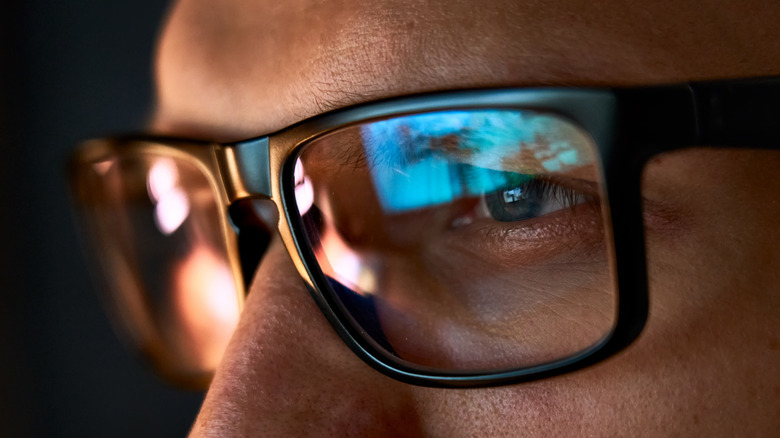This Is Why So Many More People Are Nearsighted These Days
If you have trouble seeing without glasses, you are in good company. According to the National Eye Institute (NEI), roughly 42% of the American population has myopia (nearsightedness). Believe it or not, the numbers are even higher in some other parts of the world, such as East and Southeast Asia, in which 80-90% of people have the condition. But while myopia is very common in many places today, this hasn't always been the case. In 1971, only 25% of Americans were nearsighted. As if this increase isn't alarming enough, experts estimate that around half of the world's population will have myopia by 2050.
The spike has hit some groups of people harder than others. Americans of Asian descent are particularly likely to have myopia, and people who reside in urban areas have more than double the risk of myopia than people who live in rural areas (per Pacific University).
This clearly isn't the best of news, but it does raise some important questions.
Why are so many people developing myopia?
Genetics influence a person's risk of developing myopia, but much of the increase in the past few decades is related to environmental factors. A 2015 study (via PLoS One) discovered that people are more likely to develop myopia if they perform more activities from a short distance ("near work"), such as writing, reading, studying, playing video games, or watching television. Myopia is particularly prevalent among highly educated people who spend a lot of time reading, studying, and writing.
Another contributing factor is the amount of time a person spends inside, which often goes hand in hand with the amount of "near work" they perform. The World Health Organization attributes much of the increase in nearsightedness in East Asia to intensive education and time spent indoors.
According to the NEI, the best way to prevent myopia is to spend more time outdoors. The NEI notes that after Taiwan incorporated more outdoor time into its school curriculum, fewer children developed nearsightedness. This is one of many reasons why it is important for children to get outside and play.


